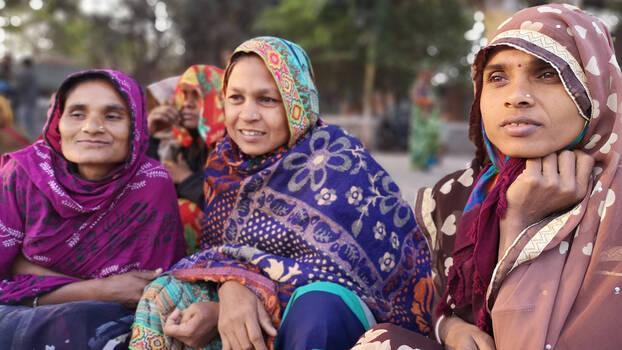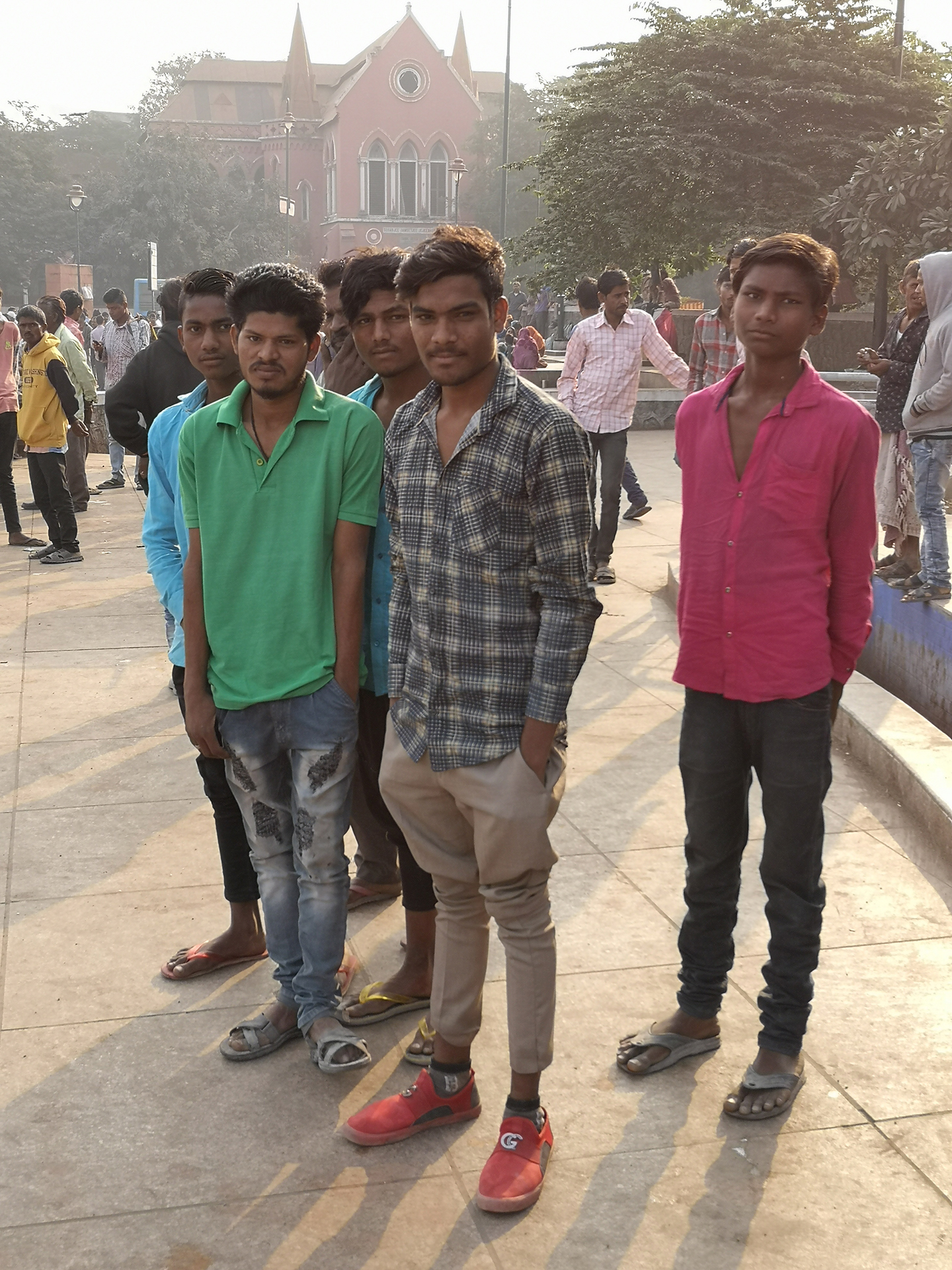
Every year, hundreds of thousands of rural Indians are drawn to the country’s industrial hubs. Exposed to poor working and living conditions, they hardly earn enough to survive. With support from the Rosa-Luxemburg-Stiftung’s South Asia Office, the Prayas Centre for Labour Research and Action fights for their rights.
“We build houses for the rich, and they leave us starving on the streets!” Nanda Jai stares pensively into the distance as the sun rises. A few metres away, her husband Sushil has joined a group of young men. It is just after 7:00, and the large square in the heart of Surat, a city of four million on India’s west coast, is beginning to fill. Men and women, some of them with their children, gather in small groups. Their aim: to find work for at least a day.
Located in the state of Gujarat, Surat is one of the fastest growing cities in the world. The textile and diamond industries have made the city wealthy, and the boom has triggered large-scale construction projects. The sector is one of the region’s largest employers—India is already an economic powerhouse, and its share of world trade is rising annually. Its GDP has more than doubled over the past ten years, reaching 2.6 trillion US dollars in 2017. India now ranks as the world’s sixth biggest economy.
But India would not be experiencing such economic prosperity without workers like Sushil and Nanda Jai. That is because the country’s growth primarily depends on seasonal migrant workers like them. Despite the sprawling industrial hubs, the majority of India’s population remains heavily dependent on agriculture—a sector that no longer yields a sustainable income. Many are forced to leave their homes behind in order to provide for their families. Driven by the hope that migrating will help them improve their living conditions and increase their incomes, more and more people are flocking to the country’s industrial hubs. The Prayas Centre now estimates the number of seasonal migrants at somewhere between 120 and 200 million annually—a figure documented in a study it released in December 2018 entitled “They Leave Their Homes to Build Ours”.
Labour migrants hope to find work as day labourers on the city’s large construction sites. There are around 15 of these labour markets, or “labour chowks” as they are known, in Surat. In the mornings employers visit the central locations to select those they deem suitable for work. It is an unsettling scene. If they are hired, women tend to be given less physical tasks such as moulding bricks or separating sand from stones which are later used as building material. Men are assigned jobs immediately on site to raise new buildings. But whatever the task, workers are hired without a contract.

Companies prefer hiring labour migrants over local labour as they rarely protest against the poor living and working conditions they are exposed to out of fear and economic hardship. Only a few are aware of their rights as humans and workers, and even fewer have the courage to speak out and assert them in practice. Health and safety regulations, contractual agreements, regular working hours—these are concepts hardly any of them have heard of. Instead, the workers’ bitter reality is marked by ten- to twelve-hour work days, delayed wages, and (occasionally fatal) work accidents. Unskilled day labourers earn around 350 rupees per day, a little over four euro, while qualified workers are paid double that amount. Still, most of them manage to send back a portion of their wages to relatives in their home villages. While these transfers hardly improve the living conditions of those left behind, they do help them weather the winter season’s idle months or pay for their children’s primary education.
Life away from their home villages is particularly difficult for women workers, says Anoushka Rose who works with Prayas. As women, she explains, they face triple discrimination: as unskilled workers, as migrants, and as members of a lower caste. They are paid 20 per cent less than men for the same work. In addition, India’s patriarchal system leaves them responsible for looking after their husbands and children. Pregnant women often work until shortly before giving birth. “Why are we paid less than our husbands for the same work?” asks Nanda. The women around her nod in support. “They’re aware of the injustice,” Rose continues. “But often they don’t know how to stand up against it. Prayas shows them what they can do and supports them in asserting their rights.”
The migrants suffer appalling living conditions. Around two thirds of migrants in Surat live in dismal circumstances—next to train tracks, major roads, or on traffic islands. Throughout the city, the past 20 years have seen many undeveloped areas become occupied by improvised tent villages. The migrants’ new homes consist of tarp huts that leave them exposed to the weather, without access to sanitation or running water, and without privacy. After dark, they huddle around an open fire and prepare dinner.
The city council ignores these realities. Even the few voices that do dare to speak out are rarely listened to. So far there are no effective structures in place to create decent conditions for these people. There is a state-funded support programme, but research undertaken by Prayas shows that only a fraction of the city’s 80,000 migrant workers have registered. For many there is too much red tape involved, and most migrants can neither read nor write. Ashamed of asking others for help, they often leave application forms blank. It seems as though these schemes are only in place to support an illusion; the government is blatantly passive in addressing these problems, while the city’s administration regularly threatens to tear down improvised settlements.
It is now 11:30 at Surat’s labour chowk. Nanda and Sushil have yet to find work for the day. The square is slowly emptying. “This is how it is sometimes, but on 20 out of 30 days a month we find work,” says Sushil, and his wife adds: “We’ll be back tomorrow.” Shortly afterwards she picks up the bag containing the lunch boxes she had prepared for them, and together they head home—until tomorrow morning at 7:00, when they will be back here again at the labour chowk.
Judith Unglaub is a sociologist with a research focus on labour migration. She works with the Rosa-Luxemburg-Stiftung’s South Asia Office in New Delhi. Translation by Lyam Bittar and Nivene Rafaat for lingua•trans•fair.